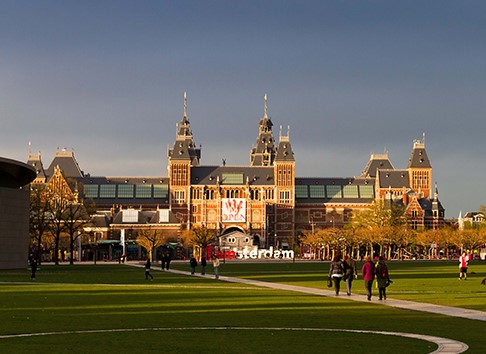
Smart infrastructure includes smart parking and will be needed to facilitate seamless mobility for a well-functioning society and for autonomous people.
Public domains will become increasingly people-oriented
Since the introduction of cars, cities have been forced to adapt to mobility technology. We also see an increased focus on making cities more liveable. Streets are going to become more people-oriented – the public domain will be for people and places, not for cars.
What does this mean for our cities? How do we create smart infrastructure that leverages the advantages of technology while keeping liveability front and centre for everybody?
Affordable and sustainable solutions
In the future, it will become even more important to provide affordable, sustainable and convenient mobility options. New solutions will need to further the decarbonisation approach and enable cities to regain valuable urban space for reallocation to green zones, economic activities or affordable housing.
Mobility centred around function
In the past, most people choose one or two means of transport. The next generation of smart infrastructure solutions will probably see substantial fragmentation: car charging, car sharing, smaller cars, partial AV cars, bicycles, e-bikes, motors, mopeds, walking, and a variety of solutions for dropping off and picking up people and goods.
Mobility solutions will centre around functions and tasks, and will move away from restricted types of transport.

What we are talking about here is a shift towards increasingly flexible mobility concepts that guarantee a level of sustainable mobility while placing a stronger emphasis on cost control and efficiency.
Q-Park: helping to create smart infrastructure solutions
At Q-Park, our role is to continue a smart, car parking infrastructure approach to add value to effective and efficient mobility solutions in urban areas. We too want efficient public transport.
We too encourage walking and cycling, because they limit congestion and pollution and enhance the effectiveness of mobility solutions through inter-connectivity – enabling people, as well as cars and public transport, to stay connected.
Our vision of the future state of smart infrastructure sees a combination of shared mobility with autonomy and electrification. This will happen through integrated energy systems, public transport and smart infrastructure for individual mobility. The respective elements may develop at different paces, but our focus is on providing service that operates with seamless mobility.
Q-Park: committed to active urban design
We therefore remain committed to playing an active role in urban design and zoning plans. We interact with city councils, architects, urban designers and project developers. Together, we will build smart cities with smart infrastructures, co-creating with logistics and delivery partners to create corridors in which people and goods can move around.
Of course, our smart infrastructure and smart parking solutions will fully embrace digital trends, as our customers continue to demand connectivity, safety, ease of use and seamless connectivity in and outside of their vehicles.
Societal attitudes to mobility and urban areas is already changing, and Q-Park is committed to helping drive this change forward.
References:
- www.uitp.org/sites/default/files/cck-focus-papers-files/PolicyBrief_Autonomous_Vehicles_LQ_20160116.pdf
- www.mckinsey.com/business-functions/sustainability-and-resource-productivity/our-insights/an-integrated-perspective-on-the-future-of-mobility
- www.smartcitiesdive.com/ex/sustainablecitiescollective/introduction-placemaking/1291822/
- www.zdnet.com/article/we-need-good-cities-not-just-smart-cities/
About Q-Park
Q-Park is an international parking company, focused on value development by providing high-quality services in purpose-built parking facilities and off-street parking at strategic locations. Q-Park's activities focus on providing services related to parking at targeted locations: in or near multifunctional inner-city areas, at public transport interchanges and at hospitals. We supply services that fulfil customers’ demands, and their need for convenience, reliability and hospitality.



